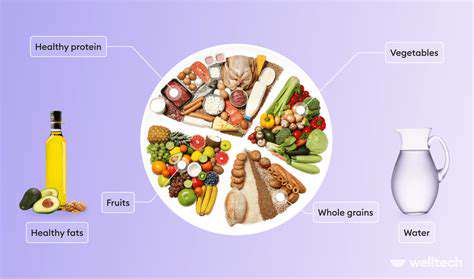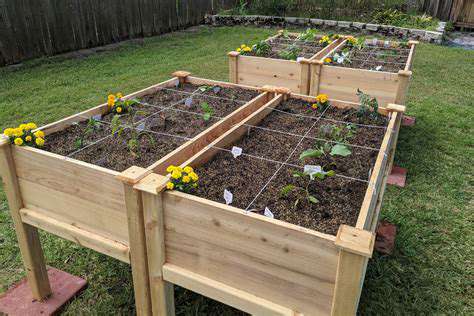Gardening for Seniors with Arthritis in Hands: Adaptive Techniques

Maximizing Efficiency and Rest Breaks
Planning Ahead for Arthritis-Friendly Gardening
Thoughtful preparation of your garden layout proves invaluable for seniors managing arthritis. Rather than diving straight into planting, take time to evaluate which plants demand minimal upkeep. Position frequently accessed items like tools and watering cans within arm's reach to prevent unnecessary strain. Breaking tasks into smaller segments throughout the week helps maintain comfort while achieving gardening goals.
Elevated planting solutions such as raised beds or waist-high containers dramatically reduce the need for bending. These adaptations create a more comfortable working height while maintaining the joy of gardening. Wide, smooth pathways between planting areas allow for easier movement with mobility aids when needed.
Selecting the Right Tools and Techniques
Ergonomic tools transform the gardening experience for arthritic hands. Seek out implements with enlarged, cushioned grips that distribute pressure evenly. Telescopic tools with adjustable lengths help maintain proper posture while working. Rotating between different tools prevents overuse of any single joint group during extended sessions.
Proper technique makes a noticeable difference in joint comfort. Push-pull motions often prove gentler than twisting actions when turning soil. For pruning tasks, sharp blades reduce the force needed to make clean cuts. Positioning yourself directly in front of work areas helps maintain proper spinal alignment.
Choosing the Right Plants
Low-maintenance plant selections can significantly reduce physical demands. Self-cleaning flowers eliminate deadheading chores, while slow-growing shrubs need infrequent pruning. Consider tactile-friendly plants with smooth foliage that won't irritate sensitive hands during routine care.
Creating an Accessible Garden Space
Thoughtful garden design promotes accessibility without sacrificing beauty. Incorporate vertical elements like trellises to bring plants to comfortable working heights. Stable seating areas placed throughout the garden provide convenient rest stops during maintenance sessions.
Prioritizing Rest and Breaks
Strategic pacing preserves energy and prevents overexertion. Alternate between physically demanding tasks and lighter activities like watering or observation. Following the 20-minute rule - working for 20 minutes then resting for 10 - helps maintain sustainable energy levels.
Utilizing Adaptive Gardening Techniques
Innovative approaches can compensate for physical limitations. Rolling garden seats with tool storage combine mobility with convenience. Lightweight, extendable tools allow work from seated positions when needed.
Incorporating Companionship and Support
Shared gardening experiences create both practical and social benefits. Partnering with others allows division of tasks according to individual abilities. Local horticultural societies often offer specialized advice for gardeners with physical challenges.
Creating a Supportive Garden Environment

Choosing the Right Plants
Plant selection forms the foundation of garden success. Regional native species typically thrive with minimal intervention, having adapted to local conditions over centuries. Consulting with nursery professionals about plant requirements prevents mismatches with your garden's unique microclimate.
Drought-tolerant varieties reduce watering demands, while disease-resistant cultivars minimize maintenance needs. Including plants with staggered bloom times ensures continuous visual interest throughout the growing season.
Soil Enrichment and Preparation
Healthy soil supports vigorous plant growth with less intervention. Annual additions of compost improve both clay and sandy soils over time. Simple jar tests reveal soil composition, guiding appropriate amendment strategies. Well-prepared earth retains moisture and nutrients more efficiently, reducing future workload.
Watering Strategies
Efficient irrigation systems save time while promoting deep root growth. Soaker hoses deliver water directly to root zones with minimal evaporation. Morning watering schedules help prevent fungal diseases while reducing water loss to daytime heat.
Pest and Disease Management
Preventative measures prove most effective against garden pests. Physical barriers like floating row covers protect vulnerable plants without chemicals. Encouraging predator insects through diverse plantings creates natural pest control. Regular plant inspections catch problems early when they're easiest to manage.
Mulching for Moisture Retention
Organic mulches serve multiple beneficial functions. A 2-3 inch layer regulates soil temperature while suppressing weed germination. As mulch decomposes, it gradually enriches the soil beneath. Different mulch materials offer varying benefits - cocoa hulls deter slugs while pine needles acidify soil for acid-loving plants.
Creating Diverse Habitats
Ecological diversity strengthens garden resilience. Incorporating plants of various heights and textures supports more wildlife species. Native flowering plants sustain pollinators throughout their life cycles. This biological richness creates natural balances that reduce maintenance requirements over time.











